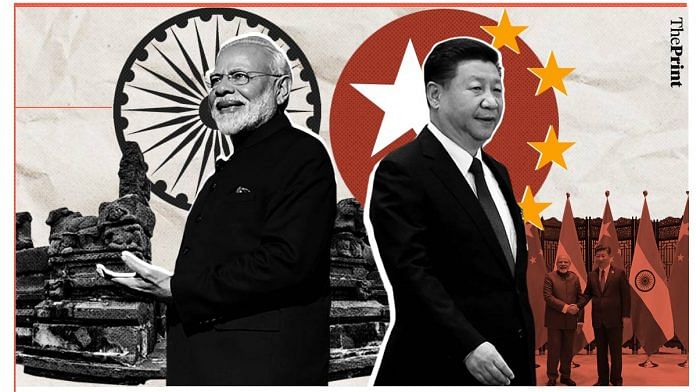American naval officer and historian Alfred Mahan popularly said: “Whoever controls the Indian Ocean will dominate Asia. This ocean will be the key to the seven seas in the 21st Century. The destiny of the world will be decided on its water”. This oft-cited statement remains a timeless adage, more pertinent than ever in light of China’s activities in the Indian Ocean region.
China’s increasing military presence and expanding influence in the Indian Ocean have understandably caused concern in countries like India, Australia and the United States. The establishment of China’s military base in East Africa’s Djibouti in 2017 alongside the development of dual-use facilities in Pakistan’s Gwadar unequivocally highlights its aspiration to dominate the region.
Since the late 2010s, China has been deploying covert spy ships disguised as ocean research vessels near strategic locations like Sri Lanka, Myanmar, and the Maldives. Reports by think tanks and media houses validate these concerns. They highlight China’s systematic endeavours to strengthen its naval capacities for blue water supremacy, as well as the country’s attempt to expand its influence into critical areas while fortifying its maritime capabilities. Of particular note is China’s possession of the world’s largest fleet of dual-purpose civilian research vessels, ostensibly deployed for scientific and commercial pursuits but also aligned with its broader strategic objectives.
China-India strategic contest
India was especially disturbed by the presence of the Yuan Wang 5, a Chinese ballistic missile and satellite tracking and survey ship, at Sri Lanka’s Hambantota port.
The 99-year lease of Hambantota to China, amid Sri Lanka’s economic challenges, underscored Beijing’s weaponisation of the Belt and Road Initiative (BRI) to advance its interests in the Indian Ocean region. Wuhan University’s Liang Meng underscored the interplay between the BRI and the imperative of fostering relationships with the island and littoral nations of the Indian Ocean.
In addition to the Yuan Wang 5, the Xiang Yang Hong 3 was docked at Malé last month. The Xiang Yang Hong 1 was spotted in the Bay of Bengal earlier this month as India tested two nuclear-capable ballistic missiles: the K4 submarine-launched ballistic missile (SLBM) and the Multiple Independently Targetable Re-entry Vehicle (MIRV)-equipped Agni V.
Recently, India’s external affairs minister S Jaishankar emphasised that the differences between India and China go beyond the border dispute. This unquestionably expands to the Indian Ocean Region. In September last year, the EAM had stated: “There’s been a very sharp increase in the size of the Chinese navy [and deployment in the Indian Ocean Region]…from an Indian point of view, it is very reasonable for us to prepare for a far greater Chinese presence than we have seen before.”
Both India and China have been competing for influence within the maritime domain. And this rivalry is prompting both countries to actively engage with smaller states in the Indian Ocean region. Take the Maldives for example, where the election of Mohamed Muizzu (known for his anti-India stance) has emboldened China’s ambitions Moreover, as Beijing and Malé finalised a military assistance agreement, Indian military personnel were withdrawn from the Maldives.
A prevailing perspective on Chinese social media asserts that the country has the right to operate in the Indian Ocean. It draws parallels with the Sea of Japan, where Japan does not hold exclusive control. Similarly, it is argued that the Indian Ocean is not India’s ocean. The Maldivian President’s ‘India Out’ election campaign also drew considerable praise on these platforms, along with his decision to oust Indian military personnel from the island nation.
Today, the competition between India and China extends beyond mere regional influence and military prowess. And the strategic importance of countries like the Seychelles, Madagascar, and Mauritius highlights the gravity of this rivalry. China is rapidly expanding its influence in the Maldives and Sri Lanka, and India is not far behind. The Indian Navy’s first responder and security provider approach was evident in how it rescued a ship – just off the Indian coast – from Somali pirates. Its proactive efforts successfully ended the three-month hijack of the Bulgarian-owned bulk carrier MV Ruen.
In February 2024, Prime Minister Narendra Modi and Prime Minister Pravind Jugnauth of Mauritius jointly inaugurated an airstrip and a jetty on Agaléga, a pair of islands situated in the western part of the Indian Ocean. Additionally, they unveiled various India-funded community developmental projects, further solidifying New Delhi’s presence in the region.
Also read:
Can China’s expansion be checked?
China is actively pursuing maritime supremacy. It has, after all, the world’s largest navy (which it is actively trying to modernise) and has appointed Admiral Dong Jun as its defence minister. China’s expanding presence in the Indian Ocean Region is anything but benign. It’s a strategic move to bolster the nation’s maritime influence, assert control over the naval assets of other countries, and limit the sway of nations like India and Australia in the region.
The BRI serves as a vehicle for advancing China’s interests in the Indian Ocean. Beijing has demonstrated the capability to leverage investments–characterised by debt-trap diplomacy – to gain control over ports and critical infrastructure and secure significant military advantages.
A coalition of like-minded countries is positioned to serve as a counterbalance to China’s escalating military presence in the Indian Ocean region. In this context, India’s role in checking China’s activities in the region is of paramount importance. This is pivotal for safeguarding the interests of other countries and maintaining stability in the Indian Ocean.
Sana Hashmi, PhD, is a fellow at the Taiwan-Asia Exchange Foundation and George HW Bush Foundation for US-China Relations. She tweets @sanahashmi1. Views are personal.
(Edited by Zoya Bhatti)



